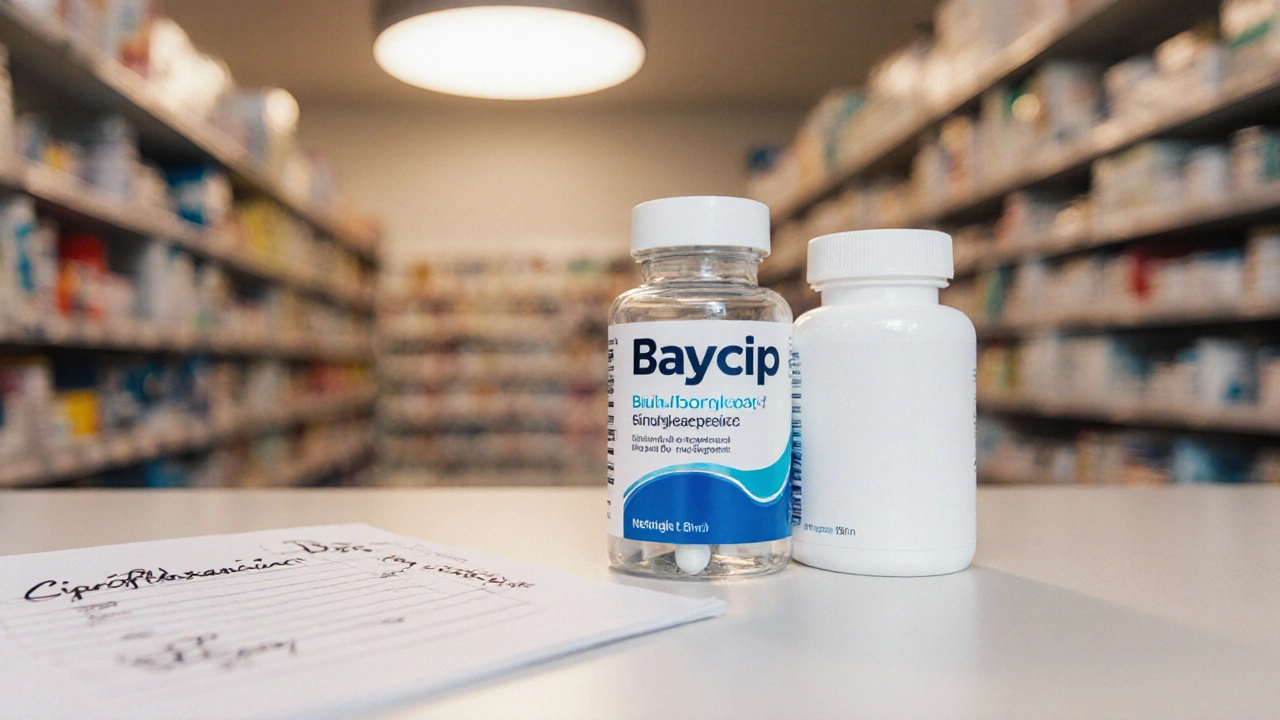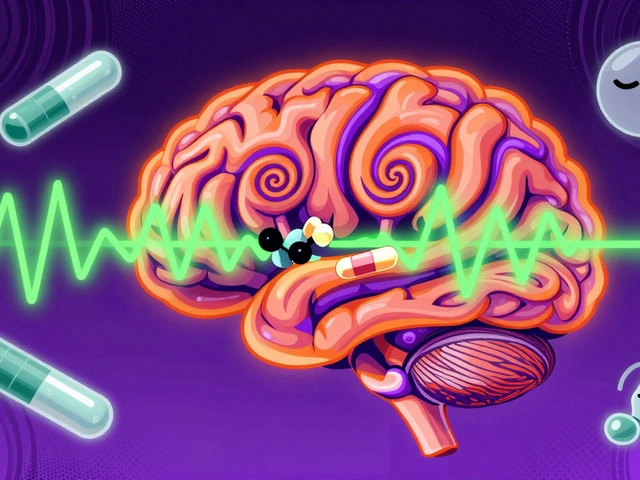Baycip – Your Guide to This Hypertension Medication
When working with Baycip, a brand-name tablet used to lower high blood pressure. Also known as bayciptine, it belongs to a niche group of antihypertensives that target the central nervous system. People dealing with hypertension, the condition where arteries stay too tight, often turn to Baycip for its unique action. The drug’s primary goal is to ease the heart’s workload and keep the arteries relaxed, which can lower the risk of heart attacks and strokes.
Baycip is classified as an alpha‑2 agonist, meaning it activates specific receptors in the brain that signal blood vessels to relax. This mechanism differs from the way beta blockers or ACE inhibitors work, which focus on heart rate or enzyme pathways. By stimulating alpha‑2 receptors, Baycip reduces sympathetic nerve activity, leading to a steadier, lower blood‑pressure reading throughout the day. Because it works centrally, patients often notice a smoother control without the rapid spikes that some other drugs cause.
In practice, doctors compare Baycip with Clonidine, another well‑known alpha‑2 agonist. While both lower blood pressure, Baycip tends to have a longer half‑life, allowing once‑daily dosing for many users. Some clinicians prefer it over Clonidine for patients who struggle with the latter’s dry mouth or sedation. Beyond Clonidine, the medication is also measured against common blood pressure drugs like amlodipine or losartan. These comparisons focus on efficacy, side‑effect profile, and cost. For example, Baycip may be a better fit for someone who needs steady control without the ankle swelling sometimes seen with calcium‑channel blockers.
Safety-wise, Baycip requires regular blood pressure monitoring. Starting doses are low, often 0.5 mg, and doctors gradually increase based on how the patient responds. Common side effects include mild dizziness, fatigue, or a slight decrease in heart rate. Rarely, patients report dry mouth or mild constipation, which usually improve with time or a simple dietary tweak. Because the drug influences the central nervous system, it’s crucial to avoid abrupt discontinuation; a slow taper prevents rebound hypertension, a sudden spike that can be dangerous. Patients with existing heart‑block issues or severe liver disease should discuss alternatives, as Baycip’s metabolism relies partly on hepatic pathways.
Typical users of Baycip are adults diagnosed with stage‑1 or stage‑2 hypertension who have not achieved target numbers with lifestyle changes alone. Primary‑care physicians, cardiologists, and sometimes nephrologists prescribe it, especially when patients need an alternative to standard first‑line therapies. The medication fits well into a broader treatment plan that includes diet, exercise, and stress management. For those on multiple drugs, Baycip’s once‑daily schedule simplifies regimens and can improve adherence. When combined with a low‑sodium diet and regular aerobic activity, many patients see their systolic numbers drop into the 120‑130 mmHg range within weeks.
Below you’ll find a curated collection of articles that dive deeper into Baycip’s comparisons, dosing tips, side‑effect management, and real‑world patient stories. Whether you’re weighing Baycip against Clonidine, looking for the safest way to start the medication, or curious about how it stacks up with other blood‑pressure solutions, the posts ahead cover the full spectrum of information you’ll need.
Baycip (Ciprofloxacin) vs Alternatives: A Practical Comparison
A detailed side‑by‑side look at Baycip (ciprofloxacin) versus common alternatives, covering effectiveness, safety, cost and how to choose the right antibiotic in Australia.





